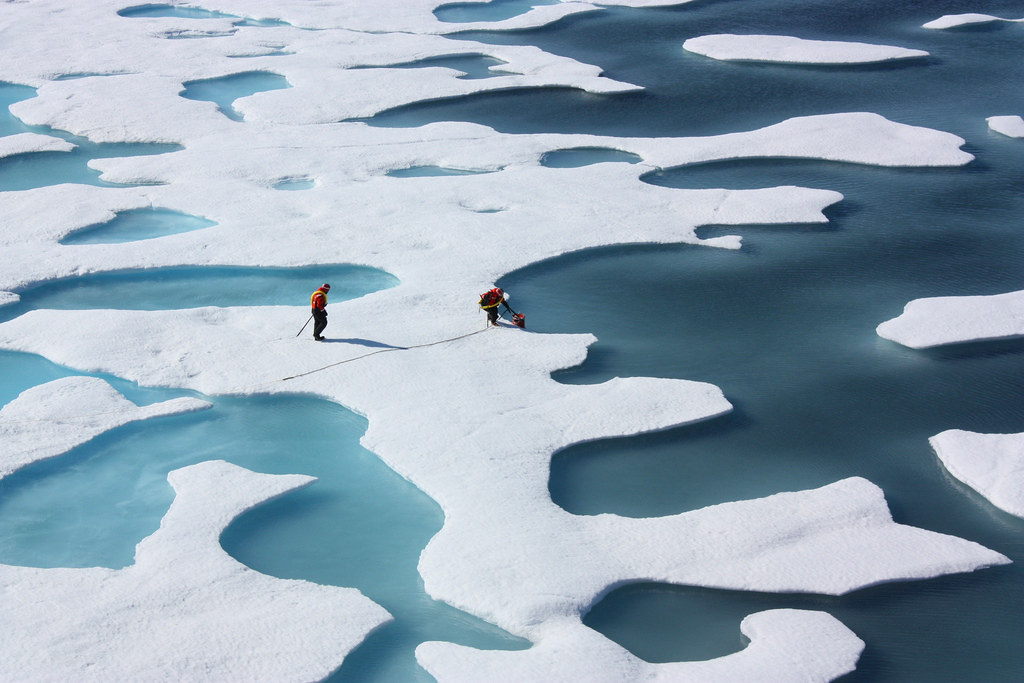
A new study shows that the increasing melt of the polar ice sheets is causing the planet’s crust to warp, as the weight of the ice is lessened; causing an upward rebound of the bedrock in the affected regions, and horizontal movement of the landscape.
Although the decrease in ice mass moves the crust by less than a millimeter per year, the effect is widespread; affecting the area covered by the ice sheets of Antarctica, Greenland and Canada’s Arctic Archipelago.
The weight of the massive glaciers that covered North America and northern Eurasia during the Pleistocene (lasting from 2,580,000 up to 11,700 years ago) pushed the Earth’s crust in those regions downward; the crust began to rise when the weight was lessened as the glaciers receded at the start of the Holocene, and the lithosphere has been rebounding ever since.
But the (geologically) sudden retreat of modern-day glaciers has added to that effect, causing not only an increase in the upward movement in the areas that are typically glaciated, but also horizontal movement of the landscape. The rising of the crust also provides a feedback loop: as the bedrock shifts it affects how the ice melts and breaks away.
“On recent timescales, we think of Earth as an elastic structure, like a rubber band, whereas on timescales of thousands of years, Earth acts more like a very slow-moving fluid,” explains Los Alamos National Laboratory geophysicist Sophie Coulson.
Coulson likens the effect to pressing a board down into a body of water, where the board represents the ice, and the water the Earth’s crust: When pressed into the water, the board displaces the water not only down but also to the sides; when the board is removed the water not only flows upward to fill the space vacated by the board, but also from the sides. Although the effect is much slower when it comes to the planet’s crust “flowing” back to fill the void left by the ice, the resulting motion—both vertical and horizontal—remains the same.
Understanding this relationship between the Earth’s cryosphere and lithosphere (collective ice sheets and geological crust, respectively) is vital to predicting how the future of climate change will play out, and may help develop the growing field of earthquake prediction.
“Understanding all of the factors that cause movement of the crust is really important for a wide range of Earth science problems,” according to Coulson. “For example, to accurately observe tectonic motions and earthquake activity, we need to be able to separate out this motion generated by modern-day ice-mass loss.”
Subscribers, to watch the subscriber version of the video, first log in then click on Dreamland Subscriber-Only Video Podcast link.
Speaking of earthquakes, I thought this to be interesting. Also interesting, about an hour before I looked at the earthquake site below, my leather image of the Maya Calendar and the ‘burden of time’ fell off the shelf above my computer, I do not recall this happening before? Is something about to happen in the Mayan world?
10/02/2021 — ALERT: Deep Large M7.2 Earthquake hits below whole West Pacific – Global unrest coming.
https://www.youtube.com/watch?v=AqUVBosQWts
https://www.mexicolore.co.uk/maya/teachers/maya-solar-calendar-picture
1st paragraph—-is let’s fix rebound